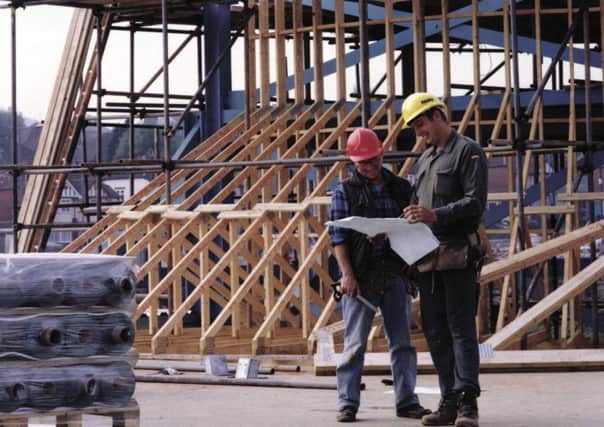Ten new homes for every town and village could solve housing crisis


As we approach another general election, the issue of housing provision is high on the political agenda of all parties. But why should housing be a political debate? Surely it is common sense that everyone has a right to a decent home and, as an increasing population, we must find effective ways of providing homes for newly-formed households.
The government acknowledged in their recently published White Paper, that the “housing market is broken” and that “we have not built enough houses”. Relative to population size, Britain has had Western Europe’s lowest rate of house-building for threedecades. The paper noted that “to meet demand, we have to deliver between 225,000 and 275,000 homes every year.”
Advertisement
Hide AdAdvertisement
Hide AdA common concern raised is that development will lead to the erosion of our green belt and protected open spaces. Yet in reality, only 6.8 per cent of the United Kingdom is seen as built up and you only have to travel the length of the country to see this. There is a distinct contrast between the dense urban sprawl of London and the scattered towns and villages across the rest of the country.
There are thought to be around 50,000 towns and villages in England and if every settlement looked to construct 10 new homes, this would provide half a million new homes. The impact of this would be minimal to even the smallest of villages. The effect of such numbers would have a marked benefit to communities. Imagine if your village had 10 new homes, with a mixed development of homes earmarked for first-time buyers, for elderly residents to downsize and for larger family houses to be formed, allowing growing families to stay in their communities.
I can hear the NIMBY [not in my back yard] brigade railing against such thoughts but how positive could such developments be for smaller communities? They would have the added benefit of providing employment opportunities for local businesses, such as builders, sub contractors and their supply merchants. In turn this could help keep struggling shops, pubs and local schools in place.
Such developments could be sensitively planned around the perimeters of villages or perhaps by redeveloping redundant or out-dated commercial or agricultural buildings. Around most small settlements, you will find farm buildings, often unfit for current agricultural purposes. Such buildings can be creatively converted. As an example, we have recently converted a concrete framed, asbestos clad Atcost building into a highly-insulated, timber-clad building for a young villager to establish their first home in.
Advertisement
Hide AdAdvertisement
Hide AdThere are planning policies in place to allow three dwellings of a total of 450sqm to be formed from redundant agricultural buildings. This policy could be expanded tofive or six 5 or 6 with minimal impact
In fact, such conversions offer exciting opportunities to create distinctive buildings, exploiting their volume and generally large scale openings.
Looking at larger settlements, the impact of 10 homes built around a town would be minimal, and if 50-100 homes were built, we would readily achieve the housing numbers required.
Such developments would allow settlements to grow organically, as they have done for decades, be free of the larger scale developments, which often blight our communities.
Advertisement
Hide AdAdvertisement
Hide AdSuch proposals would require a change to planning policies. Rather than concentrating on towns and larger villages, surely it makes sense to develop smaller settlements, which do not spoil the green spaces of our country.